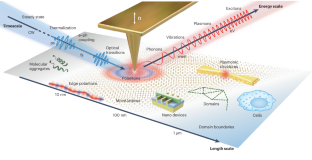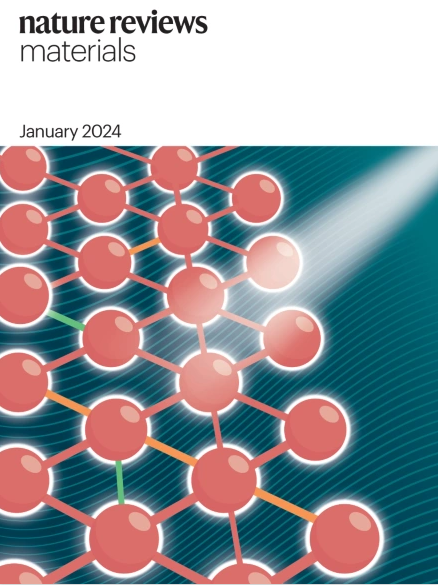可见光到太赫兹近场纳米显微镜
IF 86.2
1区 材料科学
Q1 MATERIALS SCIENCE, MULTIDISCIPLINARY
引用次数: 0
摘要
光学显微镜在广泛的科学、技术和医学领域的研究、开发和质量控制中发挥着关键作用。然而,衍射将传统光学仪器的空间分辨率限制在照明波长的一半左右。在可见光和太赫兹频率之间的宽光谱范围内超过衍射极限的技术是散射型扫描近场光学显微镜(s-SNOM)。s-SNOM的基础是原子力显微镜,其尖端被可见光到太赫兹光谱范围内的光照射。通过记录弹性尖端散射光,同时扫描尖端以下的样品,s-SNOM产生具有10 nm分辨率的近场光学图像,同时具有标准原子力微观形貌图像。这种分辨率与照明波长无关,使s-SNOM成为一种通用的纳米成像和纳米光谱技术,用于材料、结构和现象的基础和应用研究。本文综述了近场对比测量和解释的基本原理,并讨论了s-SNOM的主要应用。我们还展示了使s-SNOM能够在各种环境条件下工作的新兴发展,包括低温,电场和磁场,电流,应变和液体环境。所有这些最近的发展扩大了s-SNOMs在探索基本固态和量子现象、生物物质、催化反应等方面的适用性。本文章由计算机程序翻译,如有差异,请以英文原文为准。


Visible-to-THz near-field nanoscopy
Optical microscopy has a key role in research, development and quality control across a wide range of scientific, technological and medical fields. However, diffraction limits the spatial resolution of conventional optical instruments to about half the illumination wavelength. A technique that surpasses the diffraction limit in the wide spectral range between visible and terahertz frequencies is scattering-type scanning near-field optical microscopy (s-SNOM). The basis of s-SNOM is an atomic force microscope in which the tip is illuminated with light from the visible to the terahertz spectral range. By recording the elastically tip-scattered light while scanning the sample below the tip, s-SNOM yields near-field optical images with a remarkable resolution of 10 nm, simultaneously with the standard atomic force microscopic topography image. This resolution is independent of the illumination wavelength, rendering s-SNOM a versatile nanoimaging and nanospectroscopy technique for fundamental and applied studies of materials, structures and phenomena. This Review presents an overview of the fundamental principles governing the measurement and interpretation of near-field contrasts and discusses key applications of s-SNOM. We also showcase emerging developments that enable s-SNOM to operate under various environmental conditions, including cryogenic temperatures, electric and magnetic fields, electrical currents, strain and liquid environments. All these recent developments broaden the applicability of s-SNOMs for exploring fundamental solid-state and quantum phenomena, biological matter, catalytic reactions and more. Scattering-type scanning near-field optical microscopy (s-SNOM) enables nanoscale imaging and spectroscopy through elastic light scattering at a scanning probe tip. This Review highlights the fundamental principles, applications and recent advancements of s-SNOM across various sample environments.
求助全文
通过发布文献求助,成功后即可免费获取论文全文。
去求助
来源期刊

Nature Reviews Materials
Materials Science-Biomaterials
CiteScore
119.40
自引率
0.40%
发文量
107
期刊介绍:
Nature Reviews Materials is an online-only journal that is published weekly. It covers a wide range of scientific disciplines within materials science. The journal includes Reviews, Perspectives, and Comments.
Nature Reviews Materials focuses on various aspects of materials science, including the making, measuring, modelling, and manufacturing of materials. It examines the entire process of materials science, from laboratory discovery to the development of functional devices.
 求助内容:
求助内容: 应助结果提醒方式:
应助结果提醒方式:


